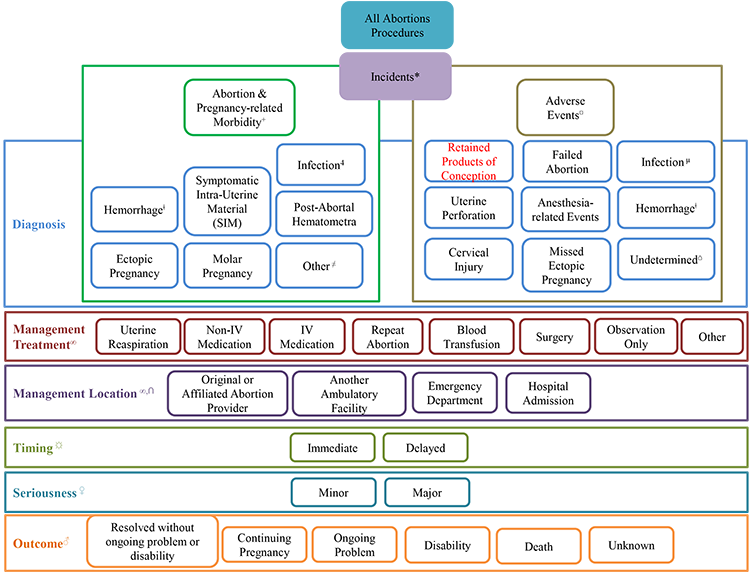Abortion is a common and safe procedure yet there has been little standardization of how to classify incidents related to patient safety. Abortion clinicians and researchers need a system that differentiates between adverse events due to clinical care and morbidities related to pregnancy, the abortion process, or other non-abortion-related conditions. The Procedural Abortion Incident Reporting and Surveillance (PAIRS) Framework, published by ANSIRH’s Diana Taylor and colleagues in the journal Contraception, provides a comprehensive, evidence-based classification framework for monitoring the quality and safety in abortion care.
The PAIRS Framework applies standard criteria and metrics that include diagnosis, management, timing, seriousness, and outcome. The framework was validated by a study of 20,000 patients in the Health Workforce Pilot Project (HWPP) and allows for evidence-based comparisons between abortion care and other common, low-risk, ambulatory procedures. The PAIRS Framework can be used in all healthcare settings including primary care clinics. This system can help to standardize incidence rate reporting terminology, allow healthcare providers to anticipate morbidity, and prevent adverse events and enhance abortion quality.
Read the full publication, titled, “Standardizing the classification of abortion incidents: The Procedural Abortion Incident Reporting and Surveillance (PAIRS) Framework,” on the Contraception website.
See the PAIRS Framework flow chart below. Click the image to view a larger PDF version.

